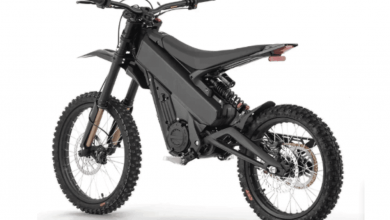How Physical Security Technology is Evolving in the Age of Smart Infrastructure

As digital transformation reshapes how cities, companies, and institutions operate, there’s an equal and growing demand for innovation in physical security. While cybersecurity tends to dominate conversations around safety, the role of advanced physical barriers, surveillance systems, and integrated smart fencing has become just as critical—especially in urban commercial environments.
With more businesses turning to smart infrastructure to secure assets and monitor access points, the commercial security landscape is undergoing a quiet but powerful evolution. This shift isn’t just about steel gates or high fences anymore. It’s about blending traditional deterrents with AI, automation, and real-time monitoring systems that work seamlessly across both physical and digital realms.
The Rise of Integrated Security Systems
In commercial and industrial sectors, physical access control is no longer limited to security guards or basic keycard entry. Modern systems are using AI-enhanced cameras, thermal imaging, and automated gates linked to smart sensors that respond instantly to unauthorized movements or breaches. This fusion of digital intelligence with hardware allows for proactive security rather than reactive intervention.
Warehouses, logistics hubs, energy facilities, and tech campuses are among the many sites adopting this hybrid approach. Integration enables centralized command centers to manage everything from lighting and alarms to personnel access, all within a secure dashboard.
Smart Fencing: More Than Just a Barrier
Security fencing has also evolved well beyond static installations. Today’s commercial fencing solutions can include motion detectors, perimeter alarms, and even vibration sensors that can distinguish between environmental factors like wind or rain versus suspicious activity.
For instance, a commercial security fencing provider in Sydney now offers high-grade fencing options tailored to businesses needing scalable protection. These solutions often combine durable materials with modular designs, making them ideal for everything from small commercial properties to large-scale industrial complexes.
Smart fencing not only acts as a deterrent but can also be integrated with surveillance networks and emergency response systems. In the event of a breach, these fences can trigger alerts, begin recording from linked cameras, and even notify local authorities in real time.
AI and Predictive Analytics in Physical Security
Perhaps one of the most exciting developments is the incorporation of AI and predictive analytics into security systems. Cameras and monitoring tools can now be trained to detect unusual behavior patterns, abandoned objects, or loitering, making them powerful tools in preemptive threat identification.
With machine learning, these systems become smarter over time, reducing false positives and helping security teams focus on real threats. Combined with facial recognition, license plate reading, and geo-fencing, businesses can create multi-layered protection strategies that are difficult to bypass.
Data Privacy and Ethical Considerations
However, with the increased use of surveillance and data collection comes the responsibility to ensure privacy and ethical implementation. Businesses must be transparent with both employees and visitors about what data is being collected and how it’s being used. In many jurisdictions, this is not only a best practice—it’s the law.
Companies investing in modern security solutions should prioritize vendors that adhere to compliance standards and offer encryption and secure data handling as part of their services.
The Future of Physical Security
As businesses continue to invest in automation and connectivity, physical security must evolve in parallel. No longer a standalone feature, it has become a vital component of comprehensive risk management strategies.
From smart gates and AI-powered cameras to predictive analytics and robust fencing systems, the tools are already here. The next step for business leaders is to integrate them thoughtfully and strategically—ensuring safety without compromising efficiency or user experience.
In a world where the lines between digital and physical are increasingly blurred, intelligent physical security is the new frontier. And it’s not just a necessity—it’s an advantage.

Source: How Physical Security Technology is Evolving in the Age of Smart Infrastructure




